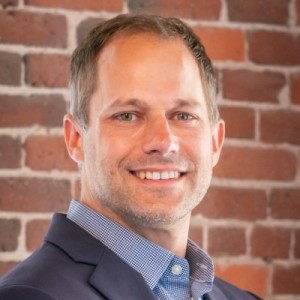- Video Library
- Brian Hess Presents RevBio at LSI USA '23
Brian Hess Presents RevBio at LSI USA '23

Brian Hess
Brian is currently the CEO and Founder of RevBio, which is a clinical stage medical device company. RevBio (formally know as LaunchPad Medical) was founded in 2014 to commercialize Tetranite™, a revolutionary bone adhesive technology that is poised to transform bone repair. Mr. Hess is focused on advancing company operations and building the product pipeline as they raise additional rounds of investment capital. Past achievements include RevBio (formerly known as LaunchPad Medical) competing and winning the "Gold Prize" in 2015 at MassChallenge, which is a global start-up accelerator program in Boston. Prior to this, Brian gained executive leadership experience serving as Chief Technology Officer (CTO) for a start-up medical device company while graduating in June 2014 with an MBA from MIT Sloan School of Management. As CTO, Brian developed an R&D organization with science and engineering capabilities to develop a Neural-Scaffold device from concept through FDA regulatory approval to start a First-in-Human clinical trial to treat patients with a devastating spinal cord injury. Brian's previous ten years of experience at Stryker led him to numerous corporate innovation awards as he developed novel medical technologies and products while leading global, cross-functional teams. Brian's passion is to lead innovation at the cutting edge of the healthcare space and to create organizations as they develop products to treat patients with unmet needs. His leadership style is to promote collaboration and distribute responsibilities across multi-disciplinary teams. He does so by building environments where people are highly engaged, aligned, and motivated to come to work everyday and to share in their discoveries. Outside of work, he enjoys outdoor activities such as running and playing sports while spending time traveling with his friends and family.
Brian Hess
Brian is currently the CEO and Founder of RevBio, which is a clinical stage medical device company. RevBio (formally know as LaunchPad Medical) was founded in 2014 to commercialize Tetranite™, a revolutionary bone adhesive technology that is poised to transform bone repair. Mr. Hess is focused on advancing company operations and building the product pipeline as they raise additional rounds of investment capital. Past achievements include RevBio (formerly known as LaunchPad Medical) competing and winning the "Gold Prize" in 2015 at MassChallenge, which is a global start-up accelerator program in Boston. Prior to this, Brian gained executive leadership experience serving as Chief Technology Officer (CTO) for a start-up medical device company while graduating in June 2014 with an MBA from MIT Sloan School of Management. As CTO, Brian developed an R&D organization with science and engineering capabilities to develop a Neural-Scaffold device from concept through FDA regulatory approval to start a First-in-Human clinical trial to treat patients with a devastating spinal cord injury. Brian's previous ten years of experience at Stryker led him to numerous corporate innovation awards as he developed novel medical technologies and products while leading global, cross-functional teams. Brian's passion is to lead innovation at the cutting edge of the healthcare space and to create organizations as they develop products to treat patients with unmet needs. His leadership style is to promote collaboration and distribute responsibilities across multi-disciplinary teams. He does so by building environments where people are highly engaged, aligned, and motivated to come to work everyday and to share in their discoveries. Outside of work, he enjoys outdoor activities such as running and playing sports while spending time traveling with his friends and family.

17011 Beach Blvd, Suite 500 Huntington Beach, CA 92647
714-847-3540© 2025 Life Science Intelligence, Inc., All Rights Reserved. | Privacy Policy







